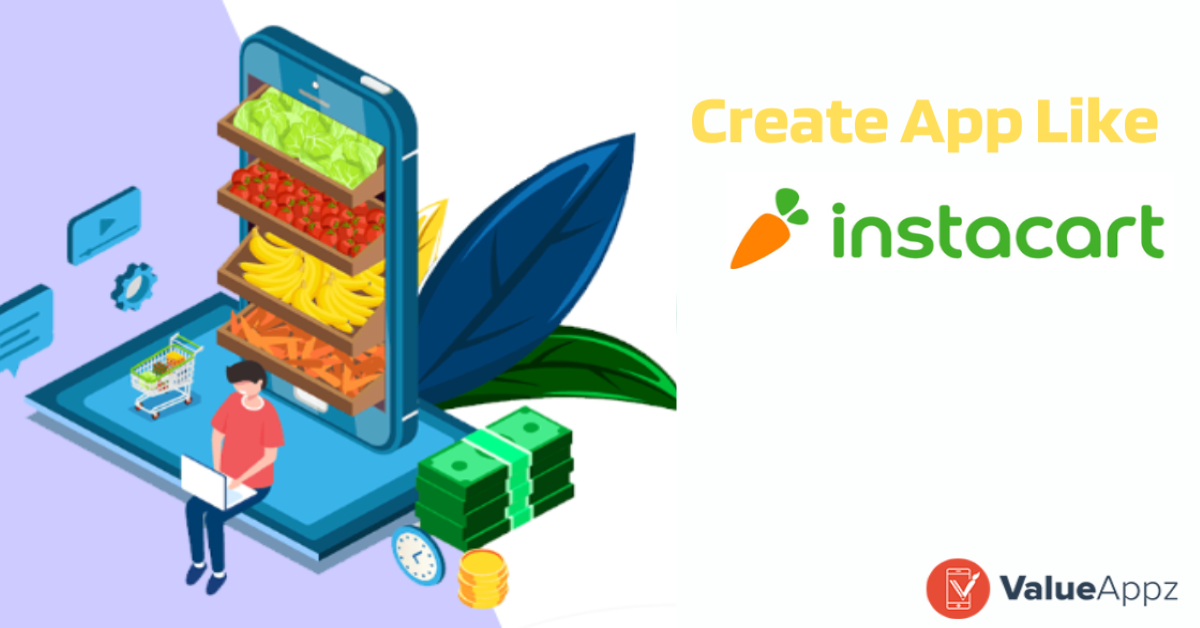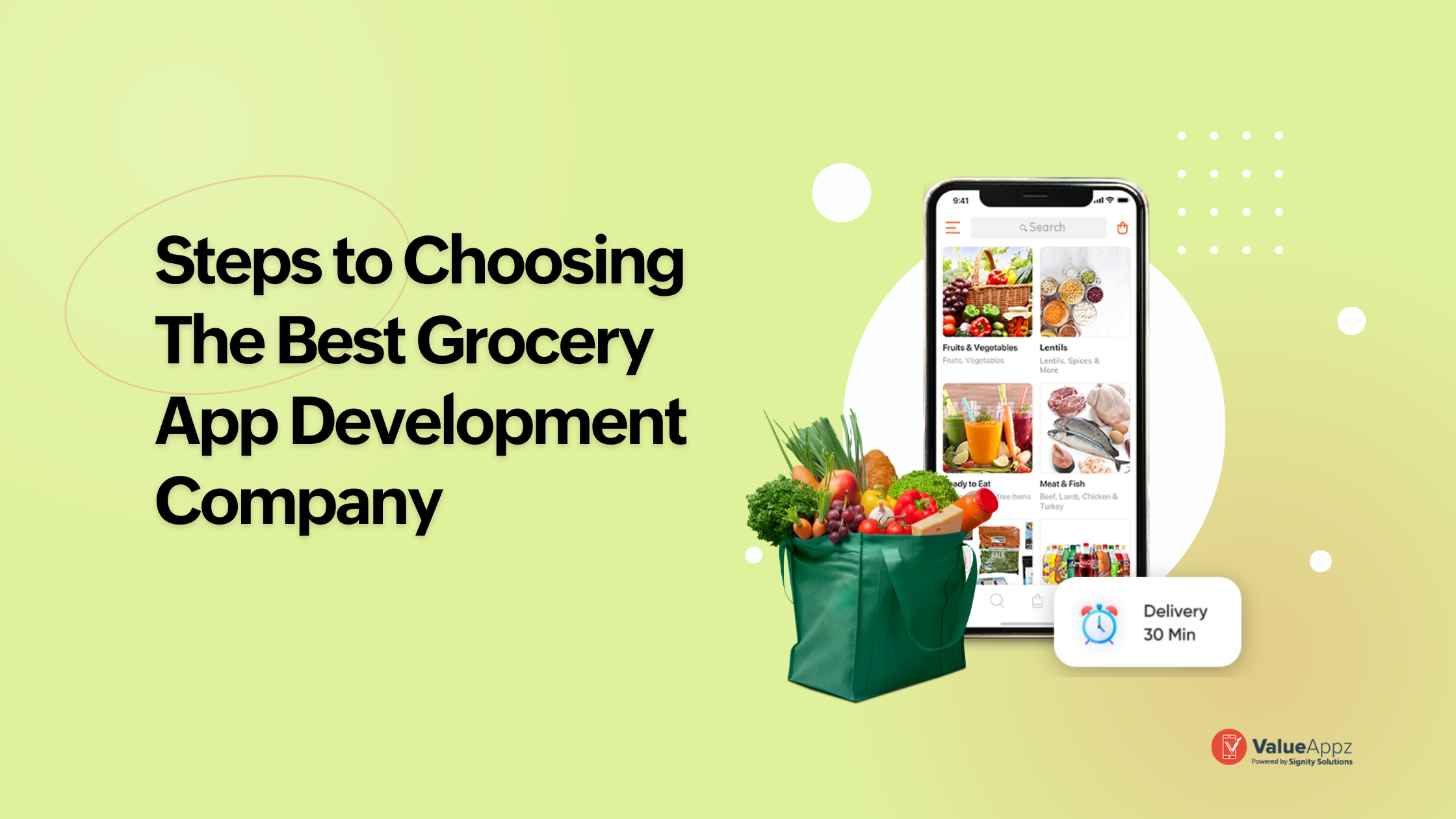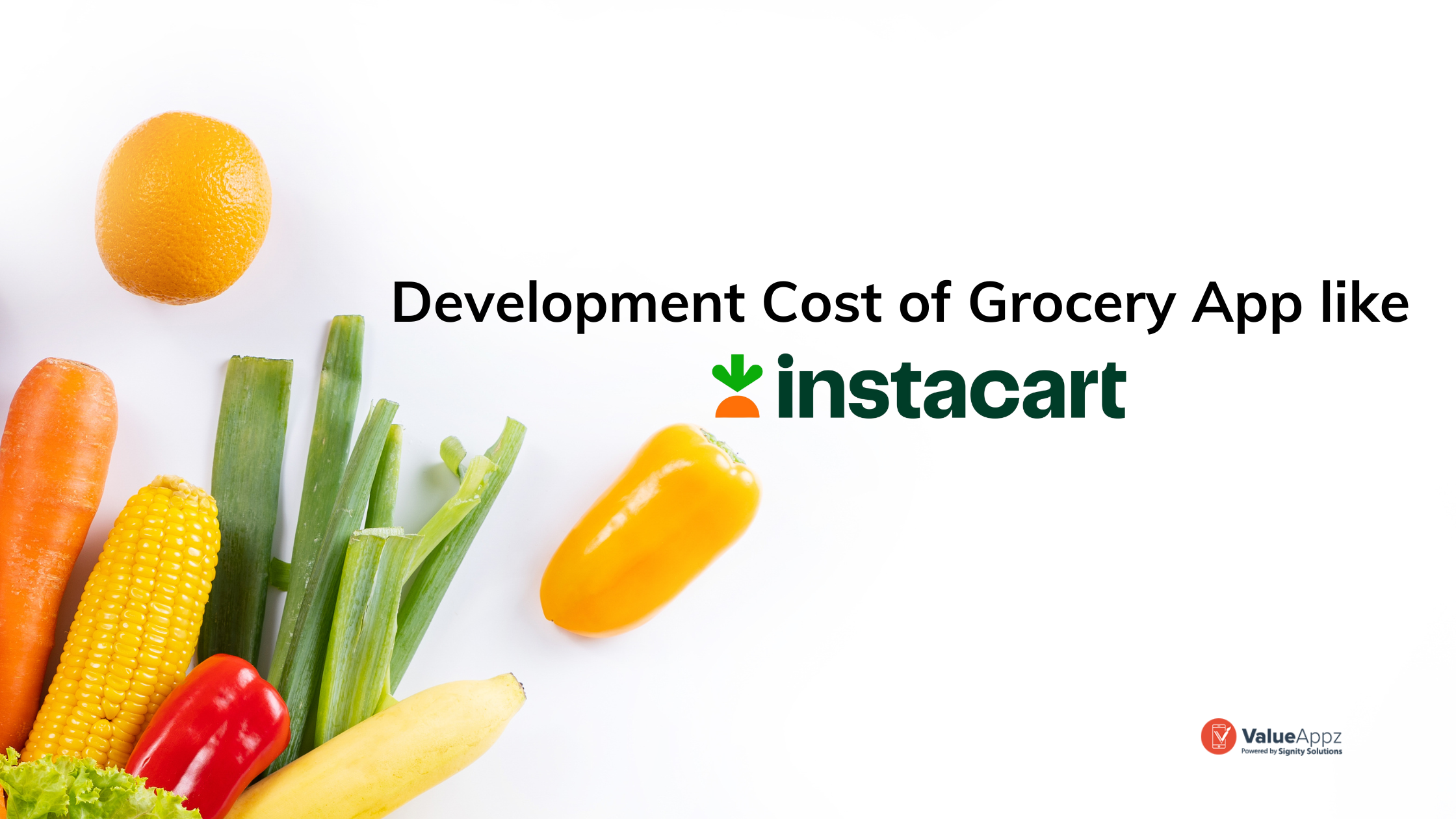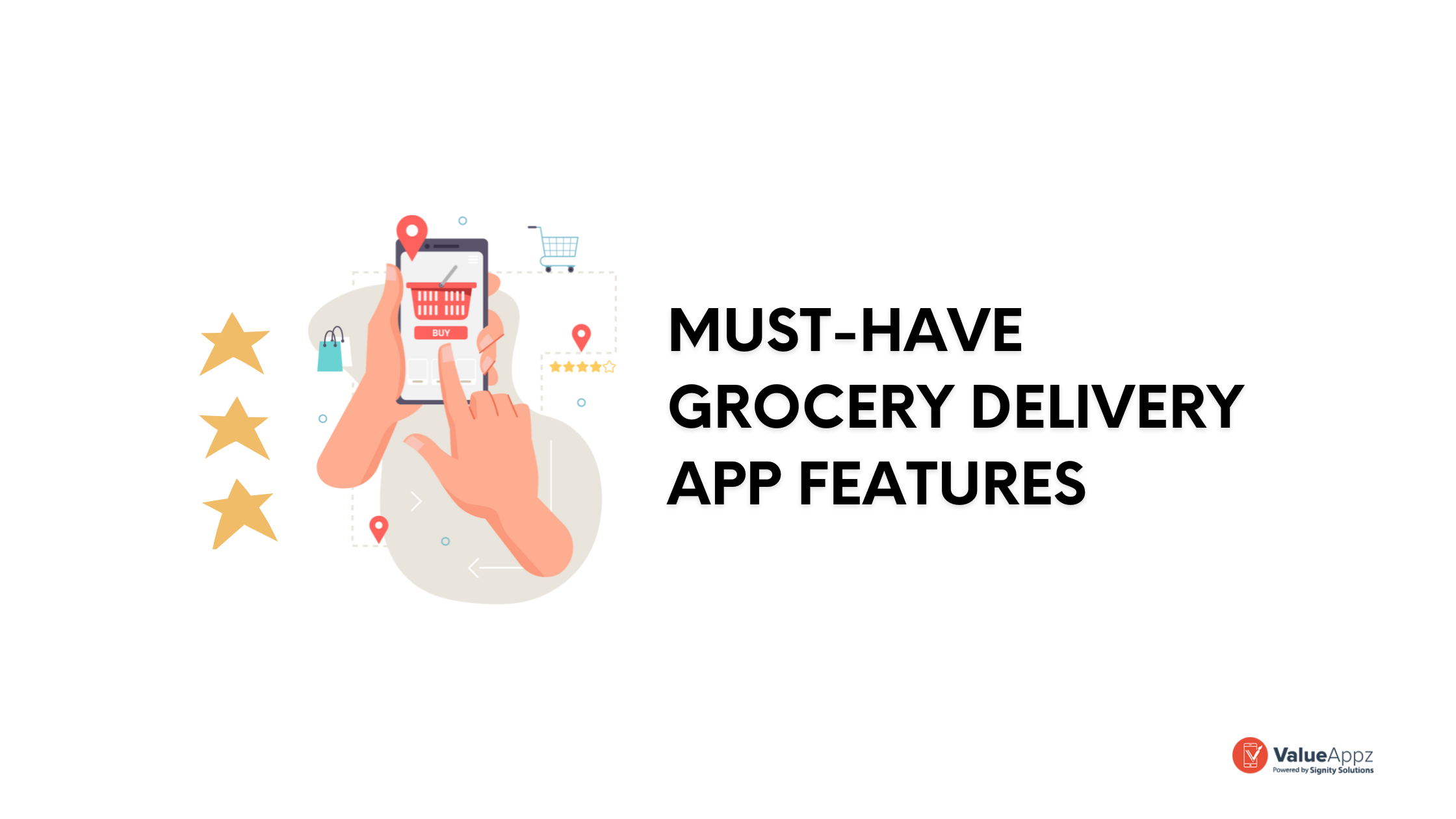How to Build an App Like Instacart?

Quick Summary: On-demand grocery delivery apps have become as common as food delivery apps. Whether it’s a small order like bread and eggs or there is a long list of the items required, customers now prefer online platforms rather than visiting a supermarket physically. Are you inspired by Instacart and want to build an app like that? Then you need to check this blog right away to discover how you can create an app that provides the same solutions as Instacart.
Table of Contents
Introduction
Gone are the days when people would drive and wait in lines to get groceries. On-demand solutions have shifted the market online, making it easier for people who do not have a grocery store nearby and for those who have little time.
Are you still running your store offline? If yes, then you are missing great growth opportunities. We understand that the shift is difficult but look at the success of online grocery delivery apps like Instacart, Blinkit, and so on.
But the question arises, “How do you make Instacart” or “Is Instacart profitable?”
This blog will answer all your queries and help you understand the steps you need to take to build an app like Instacart so that you can reach thousands of customers from a single device.
Let’s begin with why you instantly need an online platform for your grocery business.
Why should you invest in a grocery delivery app?
Grocery is a basic necessity for all. When people have a list of items ready, they pick up their phones, search for grocery delivery solutions, and place orders. Doesn’t that sound simple?
It is how the craze for online supermarket shopping is rising, and the stats below prove it.
- The development of the grocery delivery app business is projected to reach $630 billion by 2024.
- Instacart witnessed an increase of 218% in downloads and sales after COVID-19.
- 64% of consumers in the US use grocery delivery apps to buy products.

The graph above shows that the ability to shop 24/7 is the top reason why consumers are shifting to on-demand services. In grocery delivery apps, buyers can select the items and schedule the delivery when they want, hence, allowing them to shop all the time.
If you run only a store, the chances of gaining an audience’s attention other than local people are very low. Further, the local timings can affect sales, and your competitors who have preferred online platforms would take the lead.
Now that you are clear about why you should get into a business like Instacart, let’s also look at how Instacart became a well–known name.
Instacart success story
Based in the USA and Canada, Instacart was founded in 2012. It allows customers to order groceries from various stores and gain a personal experience while shopping. Since its launch, Instacart has gained a great customer base as it solves its pain points.
Another reason that made Instacart a big brand was that it could deliver orders quickly, which no one in the market could do then. By ensuring that every user got the products delivered within the desired time frame, it was able to win the hearts of millions.
The table below shows the revenue generated along with its users over the years.
| Year | Revenue | Shoppers |
| 2021 | $1.8 billion | 6,00,000 |
| 2020 | $1.5 billion | 5,00,000 |
| 2019 | $735 million | 1,30,000 |
| 2018 | $525 million | 70,000 |
The app has excellent ratings on both the Play Store and App Store, which are 4.1 and 4.8, respectively. The data shows that building an app like Instacart can prove to be very beneficial for the business.
Types of on-demand grocery delivery apps
Before building a supermarket app, it is vital to discover the types of grocery apps and identify the most suitable model for your business. Do you own a single store, various chains, or none? Whatever the case, if you are into the grocery business, you can quickly transfer to the online platform.
After all, even Instacart launched its app without any physical grocery store. The table below explains the types of models along with its description and who can benefit from them.
| Types | Description | Suitable for |
| Inventory business model | The inventory business model in grocery involves purchasing products in bulk at wholesale prices and storing them in a physical location, such as a warehouse or store, until they are sold to customers. The goal is to optimize inventory levels to ensure that products are available when customers want them, while minimizing the costs of holding excess inventory. | Suitable for those who want to collect inventory and sell directly |
| Multi-vendor marketplace | A multi-vendor marketplace business model involves creating an online platform where multiple grocery vendors can sell their products to customers. The platform serves as an intermediary between the vendors and customers, handling transactions, logistics, and customer service. | Suitable for business people who want to provide a platform for buyers and sellers to connect |
| Hyperlocal business model | The model involves delivering groceries and other household essentials to customers within a small geographic area, typically within a few kilometers of the store or warehouse. The focus is on providing a fast and convenient delivery service to customers who prefer to shop locally, with orders often fulfilled within a few hours of being placed. | Suitable for those who want to connect the local grocery sellers with local buyers |
| Single store app | A single store app is used by people who have their own grocery store and want to take it online | Suitable for those who own a single store |
| Grocery chain app | It is similar to the single store app model, however, the difference is that the app is built to carry out deliveries from multiple layouts | Suitable for those who own various outlets of the store |
How to build an app like Instacart
Now that you are clear about the types of business models and have chosen one to work on, it is time to start building your app.
Instacart has become one of the market’s top players, not for just one reason. From local store connections to marketing strategy, user-friendly platforms, etc., a number of things have to be kept in mind. Here are the key factors to consider when building an app like Instacart:
Integration with major retailers and grocery stores: Partnering with major brands can help tap into the existing customer base and reach a wider audience.
User-friendly interface and intuitive design: An easy-to-use interface and streamlined checkout experience can attract users, even novice smartphone users.
Solid distribution strategy: Leverage social media platforms and influencers to promote your app and generate more downloads.
Monetization strategy: Offer premium features, in-app purchases, or exclusive discounts to incentivize users so that they spend more time and money on your app.
Data analytics: Constantly measure and analyze user data to make data-driven decisions about improving your app and driving growth.
By considering these factors and thoroughly researching the market, you can create a successful grocery delivery app that rivals Instacart.
Top features needed to make an app like Instacart
Planning to build an app requires careful consideration. The features play a critical role in making it a success. The business model requires apps for vendors, consumers, delivery agents, and the admin. Each app should have the necessary features for smooth functioning and ensure the order is placed and delivered on time.
User features
| Feature | Description |
| User Registration | Allow users to create an account and login to the app |
| Product Catalog | Display a list of products available for purchase |
| Product search | Help search for specific products |
| Product filters | Filter products by category, brand, price range, etc. |
| Shopping cart | Add and remove items from their cart |
| Checkout | Pay for their purchases securely via various modes |
| Real-time order tracking | Track the status of their orders in real-time to get every-second update |
| Order history | View their past orders |
| Delivery management | Choose a specific delivery time and track the delivery status of their order |
| In-app messaging | Communicate with the delivery person or customer support |
| Rating and review system | Rate and review products and the overall service |
| Multi-platform support | Develop the app for multiple platforms, such as iOS and Android |
| Multilingual support | Support multiple languages to serve a diverse user base |
Vendor features
| Feature | Description |
| Vendor Registration | Allow vendors to create an account and add their products to the app |
| Product management | Help vendors to add, update, and remove products from their catalog |
| Order management | Easily view and fulfill orders placed by users |
| Payment management | Track their earnings and receive payments securely online |
| Customer feedback | Allow vendors to view and respond to customer reviews and feedback |
| Multilingual support | Support multiple languages to serve a diverse user base |
Delivery agent features
| Feature | Description |
| Agent Registration | Allow agents to create an account and view available delivery jobs |
| Order management | View and accept or reject delivery jobs |
| Real-time order tracking | Track the status of their delivery jobs in real-time |
| Navigation integration | Integrate with navigation services to provide optimized routes to delivery destinations |
| In-app messaging | Communicate with customers or support in case of any issues |
| Earnings management | Allow agents to track their earnings and receive payments securely |
Admin features
| Feature | Description |
| Dashboard | Provide an overview of key metrics, such as user activity, revenue, and order volume |
| User management | Manage user accounts, access, and permissions |
| Product management | Easily manage product listings, prices, and availability |
| Order management | View, manage, and track orders |
| Payment management | Manage payments to vendors and delivery agents |
| Customer support | Provide support to users and resolve any issues |
| Analytics | Provide insights into user behavior, sales performance, and other metrics |
These are some of the critical features required to build an app like Instacart for each user type. The specific features may vary depending on the scope of the project and the needs of the target market.
The cost to build a grocery app like Instacart
Once you have the idea ready with critical parts like the business model and the essential features, the question arises, “How much does it cost to build a grocery app?”
Building an app like Instacart can cost between USD 15,000 to USD 60,000. The cost of building an app is high as it requires time, specific technical skills, and a team of highly professional people. It further depends upon a variety of factors:
- App complexity
- Number of features to be added
- The technology used in the development
- Size and experience of the team
- Days and hours required to build the app, and so on.
How can ValueAppz help you?
As mentioned above, Instacart grocery clone app development requires an experienced team of developers who can guide you from ideation to the application’s design, building, and maintenance. We ensure that we keep the process transparent with our clients so that they get quality work for every penny they spend.
We at ValueAppz will help you get your app from scratch, or you can also opt for the Instacart clone app, where you can customize it as per the business requirements and launch it within a few days. Get in touch with us to learn more about it.
THE AUTHOR
Harjyot kaur
As a technical content writer my focus is on creating high-quality, engaging, and informative content that simplifies complex technical topics. Throughout my career, I have continuously pursued opportunities for growth and development, refining my skills and expanding my knowledge base.

Get ready to digitally transform your business.
Let our team help take your business to the next level. Contact us today to get started on finding the perfect solutions for your business needs.










